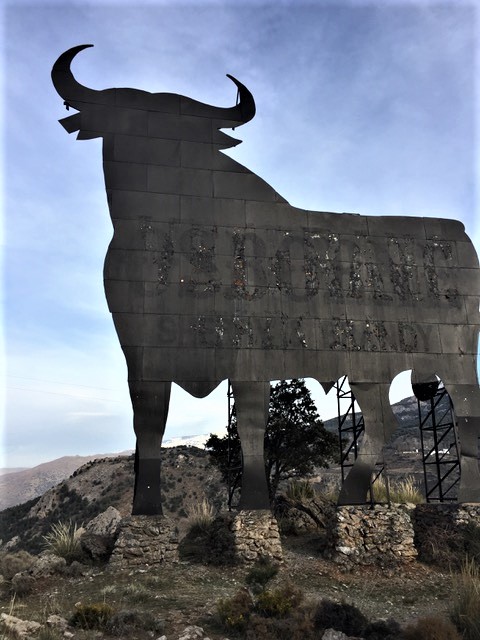For anyone who regularly travels on the Spanish roads, the black silhouette of Osborne’s bull is a familiar sight. It has graced the Spanish landscape in many places since 1962. In 1988 a law banned roadside billboards on grounds of road safety. However, there is one exception: Osborne’s bull.
The 1988 law banned billboards on state roads outside built-up areas. The purpose of the law was to prevent road users from distracting and thus to promote road safety. In 1989, despite protests, authorities forced advertising agencies to remove as many as 5,000 billboards along the highways.
‘Save the Bull’ as a cultural icon
Osborne’s bull, which advertised the brand “Brandy Veterano”, went through life from then on without advertising text. This was hidden from view with black paint. Despite this, the emblematic black bull was also discredited in 1994 for violating the law that bans roadside advertising. However, there was support for the popular bull from municipalities and autonomous regions thus “Save the Bull” initiative was born. Proponents argumented that the popular Osborne´s bull was not an advertisement but a cultural icon. Landowners even made available pieces of their land to house illegal bulls.

Toro de Osborne
In 1997, the Supreme Court ruled that the bull had a greater significance than mere publicity. The ruling stated it was also a harmonious part of the landscape. Undeniably, the 14 metre high, matte black silhouette often forms an impressive unity with the beautiful but unruly Spanish landscape.
Prohibited advertising billboards
Although advertising pillars along the Spanish roads frequently scream for the attention of the motorist, different administrations often prohibit them. A well-known example is the coast road from Málaga airport to Torremolinos, Benalmádena, Fuengirola, Mijas, or Marbella. The same picture is visible around Madrid, in the Canary Islands, and Mallorca. But the beautiful landscape is marred in many places by advertisements for hardware stores, developers, car brands, and telephone companies.
These billboards owe their right to exist as the state law only applies outside built-up areas on state roads. However, the majority of roads in Spain are the responsibility of the autonomous regions or municipalities where different laws apply. Moreover, a completely empty landscape can still be registered as a built-up area in the Spanish zoning plans, so that advertising along these roads is still possible.
‘Who sees a bull first?’
Peopel perceive ofen the billboards along the roads in Spain as disfiguring and not benefitting road safety. However, many are happy that the authorities made an exception for Osborne’s bull. For example, in many Spanish cars, children still play the game: “Who sees a bull first?” How many have you already spotted? There are still 91 in total!


